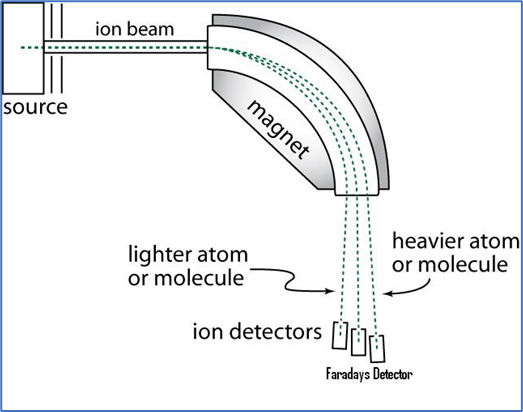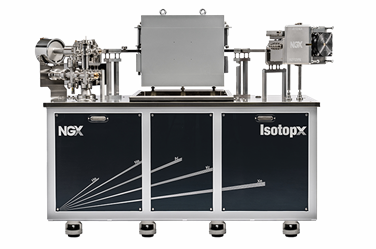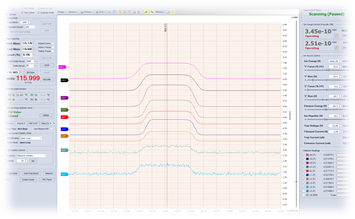A colleague recently asked me about noble gas mass spectrometers. He’d heard that the size is a critical factor, more so than with some other isotope ratio mass spectrometers. So, does size matter, and if so, why? If you have comments, thoughts, or corrections, do please feel free to contact me directly, I’d love to hear from you (damian.tootell@isotopx.com).
Firstly, for size, read volume. The size of the instrument is only a factor in the sense of how easily it fits into your lab (which can be an issue of course). But the volume of the vacuum envelope (i.e. the volume inside the instrument that is under vacuum) does have a bearing on instrument performance. Some isotope ratio mass spectrometers analyse samples that are introduced over a user-selected period of time (e.g. MC-ICP-MS and IRMS). I’ve heard people say that these instruments are essentially pumping a constant leak! To a certain degree, the longer the time period that the sample is introduced for, the better the potential analytical precision.

But a noble gas MS is different. It operates using the principle of “static vacuum”, meaning that the sample is injected, in a gaseous state, into the mass spectrometer in a single shot. The sample inlet is closed off, and the sample analyzed without further ingress of any gas, sample or otherwise. The sensitivity of the instrument is inversely proportional to the volume of the vacuum envelope. So, a low volume instrument means a more sensitive instrument. Smaller is better, case closed. But is that really the only factor?
It’s not the only factor, otherwise all noble gas instrument would be tiny. If you’re interested in measuring multiple isotopes of the same element then you need dispersion, or in other words you need the space inside your mass spectrometer for the ion beams to spread out allowing simultaneous measurement. If you don’t have this dispersion, you can only measure certain isotopes by peak jumping. This isn’t simultaneous measurement and seriously limits the precision.
There’s also the issue of resolution. A physically larger instrument design, with a greater radius magnet, is more likely to have the resolution required to separate out the target analyte from potential interferences, often originating from background gases within the MS. A larger instrument of this kind also has the potential to have larger Faraday detectors. This can also help make a more precise isotope ratio measurement.

Therefore, the internal volume of a noble mass spectrometer is a compromise; as small as you can get away with to allow high sensitivity, but big enough to allow the dispersion and resolution that your isotope systems require. Indeed, this compromise is exactly what we went through with the design of NGX. It has the same ion optics as our TIMS instrument, being plenty large enough to allow the measurement of the isotopes of Kr, Xe, Ne and Ar – in each case “statically”, meaning simultaneous measurement without requiring a peak jump. All this, and yet the volume is lower than on some of the other commercially available noble gas instruments, so we think it’s the perfect compromise.
Are these the only factors to consider when looking at a new noble gas MS? There’s also the Faraday collectors to consider. The more the better! NGX has up to nine Faraday collectors, this means that all nine of the isotopes of xenon can be measured simultaneously. NGX also uses our patented ATONA technology, meaning lower noise, a wider dynamic range, and better stability than resistor-based Faraday amplifier systems. There’s plenty more on the website if you want to learn more about ATONA.

But what about if you need that larger volume to accommodate your simultaneous ion beams, yet you want better sensitivity? The answer to this is the cathode ion source that we recently introduced. This operates at lower temperatures, creating fewer interfering hydrocarbons and significantly reducing instrument backgrounds. This increases the sensitivity by as much as seven times when compared to a standard filament – and having pretty much the same effect as dramatically decreasing the volume of the instrument. So, you can have your cake and eat it!
Thanks for reading! In my next blog post I’ll start to look at some specific technologies we’ve included with NGX.
